Have you ever pondered the variety of diamond shapes that exist? It’s natural to be intrigued by unique diamond shapes and curious about the range of options available. Diamonds are truly extraordinary due to their rarity, visual appeal, and inherent value. Each diamond possesses its own distinct shape, making it nearly impossible to find two identical ones in their original state before any processing takes place.
The shaping of diamonds involves human intervention through cutting and polishing, which allows for the transformation of their form. In this article, we will delve into the different types of diamonds and explore their most prevalent shapes in greater detail. With numerous diamond shapes to choose from, we can select the one that resonates with our personal taste and fulfills our specific reasons for acquiring them. Prepare to discover all of this and more in the following sections!
DESIGN YOUR OWN ENGAGEMENT RING: START WITH A SETTING OR START WITH A DIAMOND. IT’S REALLY UP TO YOU!

Shaping Up The Conversation About Diamond Contours
It is worth highlighting that the shape of a diamond is often determined by the compromises made during the cutting process. The primary objective is to preserve the maximum size or weight of the raw crystal, primarily driven by the desire to maximize profits.
When purchasing a diamond, it is crucial to distinguish between good and poor cuts. This means recognizing instances where the focus on preserving size compromises the overall appearance and quality of the diamond.
It’s important to differentiate between two aspects of the final product: style and workmanship. Style refers to the shape of the diamond, while workmanship encompasses the diamond’s proportions, polishing, and finishing, collectively known as the diamond cut.
While polishing and finishing are essential, customers typically prioritize the shape of the diamond based on personal taste. As you’ve already learned, there are numerous diamond shapes, and we have listed the most popular ones below:
- Oval
- Round
- Princess cut
- Radiant cut
- Cushion cut
- Emerald-shaped
- Marquise cut
- Pear-shaped
- Trillion cut
- Asscher cut
- Heart-shaped
- Baguette-cut
- Old European cut
- French cut
- Rose-cut
Before we delve further, let’s introduce you to some important terms used in diamond shops to describe the shapes and styles of diamond cuts:
- Brilliant: Refers to a round brilliant cut diamond.
- Baguette: Gradually cut diamond with a rectangular shape. If the two sides of the baguette are narrower, it is referred to as a trapezoidal or tapered baguette.
- Princess: Brilliantly cut diamond with a square shape, featuring 57 to 70 facets and variable proportions.
- Radiant: Brilliantly cut diamond with a square or rectangular shape and cut edges, similar to emerald-style cuts.
- Trilliant: The term used for all triangular diamonds that are brilliantly cut.
- Quadrillion: Refers to a square diamond with 49 brilliantly cut facets.
There are also other unconventional diamond shapes collectively known as fantasy cuts. These shapes come in various forms, often resembling fruits, animals, stars, ships, and more.
In the following sections of this article, we will discuss each diamond shape individually, providing you with comprehensive information about your favorite shapes. Make sure to continue reading to gain a deeper understanding!
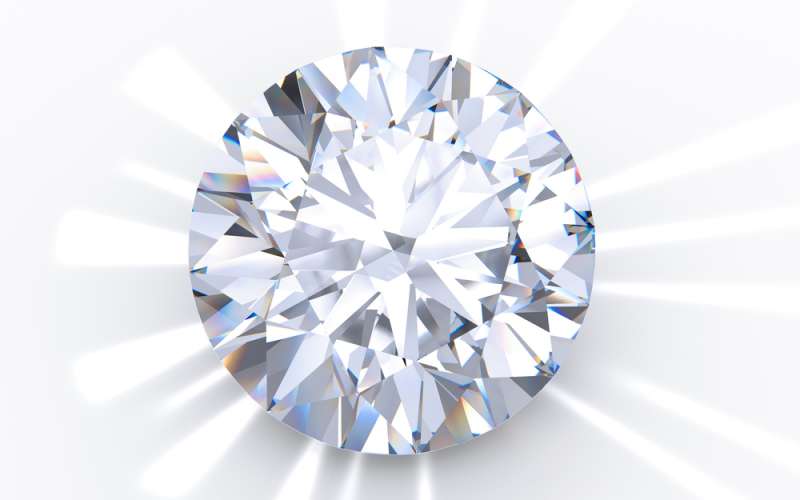
Round Shape Diamond
Without a doubt, the round diamond shape reigns supreme as the most popular choice for engagement rings. It holds a special place in history as one of the oldest and most classic diamond shapes. Its simplicity, elegance, and timeless appeal make it a foolproof option.
The round shape can be interpreted in two distinct ways. Firstly, as an infinity shape seen in engagement rings, it symbolizes eternal love and the endless bond between two individuals. On the other hand, some may perceive the circular shape of the diamond as something that encloses and limits freedom.
This alternative perspective has paved the way for the emergence of new diamond shapes in the realm of engagement rings. However, despite the ongoing popularity of round-cut diamonds, these alternative shapes have found their own niche in the market.
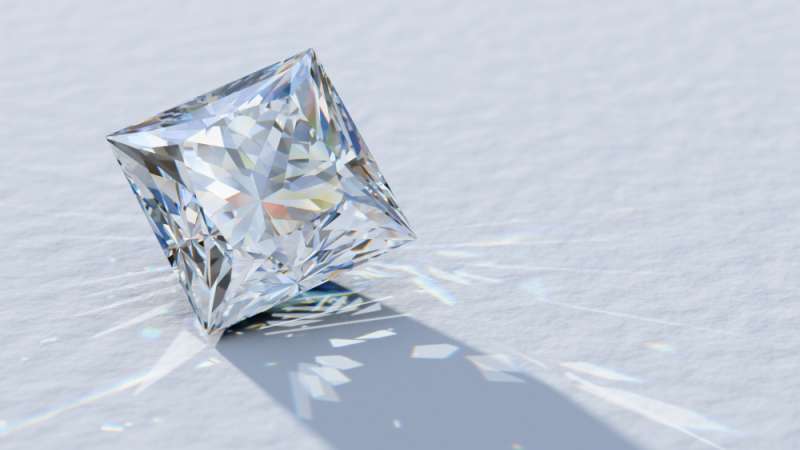
The Princess Cut Diamond
The princess cut diamond is a square gemstone with distinct sharp edges, multiple angles, and a mesmerizing sparkle. Its elegant and chic shape exudes both power and classic timelessness.
When it comes to brilliance, the princess cut diamond certainly delivers. Its carefully crafted facets maximize the reflection of light, resulting in a stunning display of radiance.
The origins of this diamond shape can be traced back to the 1920s when it was initially known as the French cut. Over the course of 40 years, diamond cutters made various adjustments and refinements, ultimately creating the princess cut as we know it today.
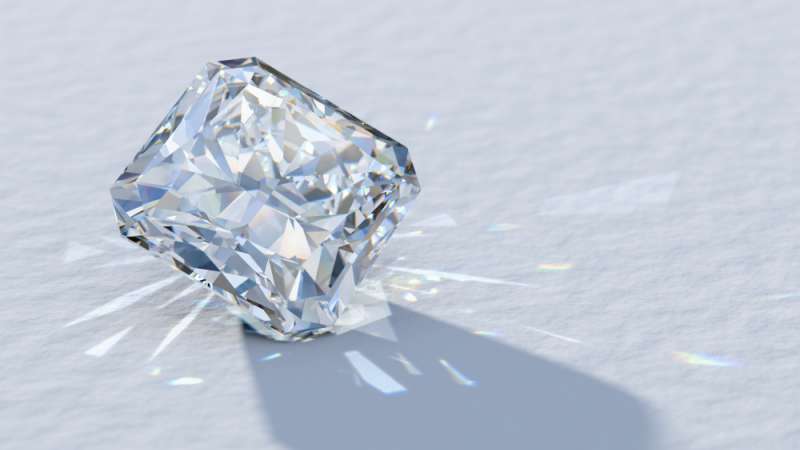
Radiant-Cut Diamond
Radiant cut diamonds are renowned for their exceptional brilliance, making them one of the most dazzling diamond shapes. Not only do they possess a captivating sparkle, but their truncated corners also enhance the stone’s durability.
The faceting of a radiant-cut diamond gives it a fiery and radiant appearance, similar to a princess-cut diamond, while still maintaining the soft-cut edges. This unique combination of traits makes radiant-cut gems a favorite among diamond enthusiasts.
Surprisingly, the modern radiant cut is relatively young, dating back less than 40 years. In the late 1970s, Henry Grossbard introduced the first radiant cut diamond through the Radiant Cut Diamond Company in 1977. Prior to its creation, other rectangular-shaped diamonds had fewer facets and were cut with less attention to detail. Despite its relatively short history, the radiant cut diamond has gained immense popularity due to its brilliance and versatility.
Although not as commonly seen as some other shapes in engagement rings, radiant cut diamond rings are highly desirable for their beauty and allure.
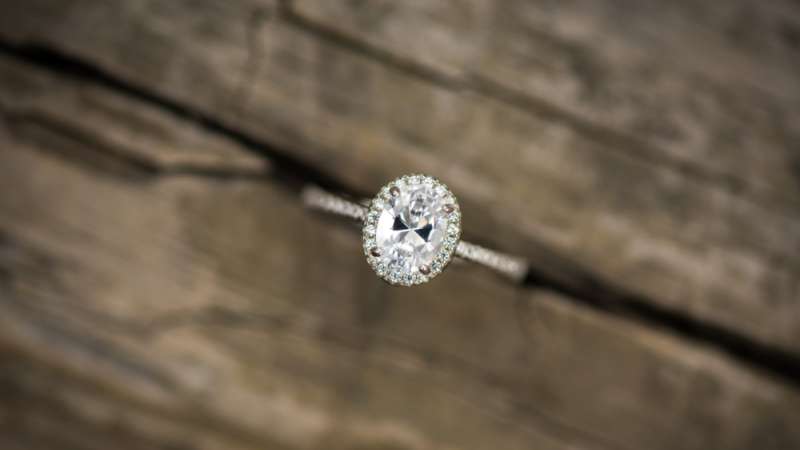
The Oval Shape Diamond
The oval shape of diamonds adds a touch of elegance and surpasses the simplicity of a perfect circle. It evokes a sense of nostalgia, reminiscent of traditional and vintage jewelry worn by queens and princesses.
The brilliance and sparkle of an oval diamond largely depend on the skill of the cutter. While it can exhibit exquisite brilliance, it may not quite match the shimmer of a princess cut diamond.
Among the renowned oval cut diamonds is the Pink Steinmetz diamond, a remarkable gem valued at 25 million dollars. This diamond holds the distinction of being the largest pink diamond, weighing an astounding 59.6 carats.
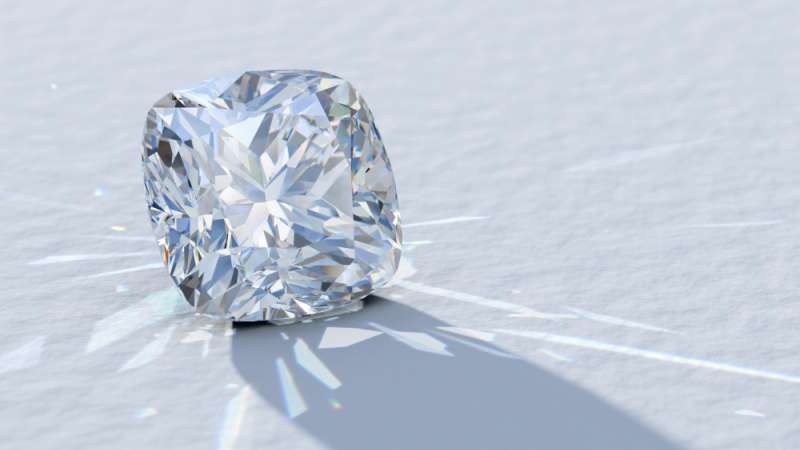
Cushion-Cut Diamond
The cushion cut diamond features a rectangular shape with rounded edges and distinctive facets that enhance its brilliance. This cut, reminiscent of a cushion, has a long-standing history of popularity among royal families.
The prominent facets of the cushion cut make it easily recognizable and contribute to its unique sparkle.
The cushion cut diamond we know today has evolved from its predecessor, the old mine cut, which originated in the 1700s and had 58 facets.
While the cushion cut maintains a similar overall shape to the old mine cut, modifications have been made to maximize the diamond’s brilliance. These include a lower crown, a shallower pavilion, and a larger table facet.

Emerald-Shaped Diamond
Emerald-shaped diamonds possess elongated facets arranged in a step-like pattern, creating a distinct appearance reminiscent of woven layers. These diamonds exude a sense of strength, boldness, and invincibility. The primary intention behind this shape is to highlight clarity with exceptional precision, surpassing other diamond shapes.
The pronounced edges and layered facets of emerald-shaped diamonds contribute to their captivating brilliance and color, similar to that of white diamonds.
Those who choose this diamond shape are often individuals who embody sophistication, strength, and unwavering character. If these qualities resonate with you, an emerald-cut diamond may be the perfect choice for you.
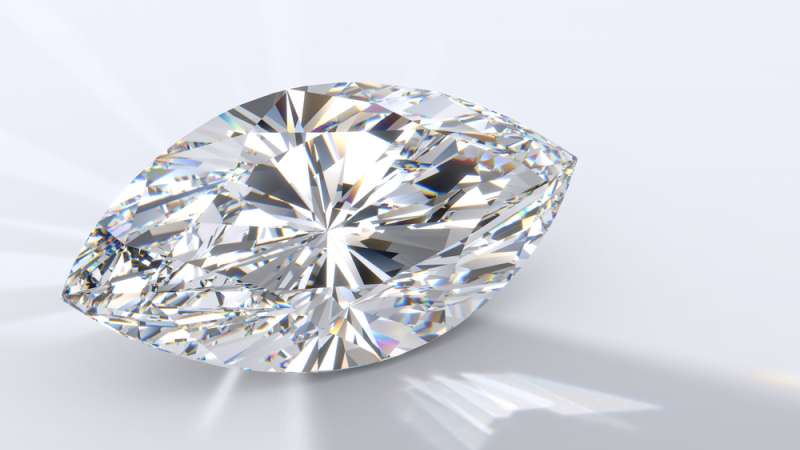
Marquise Diamond Shape
The Marquise shape is a captivating diamond cut that often embodies the wearer’s uniqueness, individuality, and beauty. Its distinctive shape can resemble a boat or even an eye, depending on one’s perspective. The Marquise cut is known for its remarkable depth and brilliance, making it one of the most radiant diamond shapes.
It’s important to note that Marquise cut diamonds can exhibit a bow-tie effect to some degree, ranging from completely imperceptible to pronounced. The visibility of the bow-tie effect cannot be reliably determined by examining the diamond’s certificate alone but requires visual inspection.
If you’re considering purchasing a Marquise cut diamond and would like to have it thoroughly evaluated, it’s advisable to seek assistance from a professional to ensure a comprehensive examination.
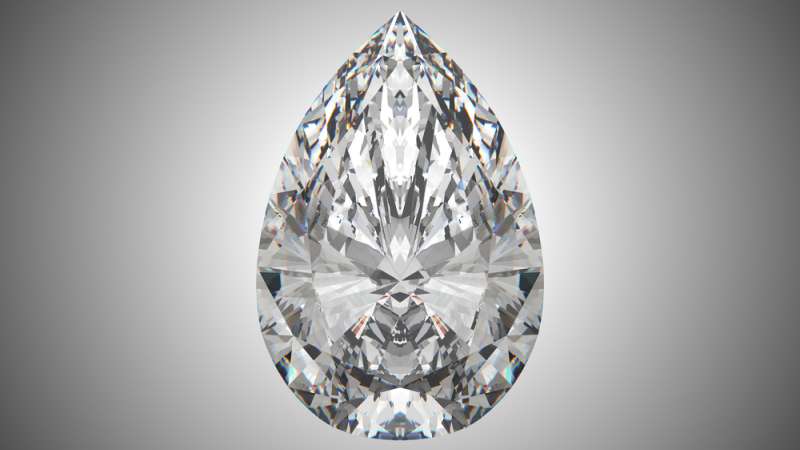
Pear-Shaped Diamond
The pear-shaped diamond is a captivating blend of an oval and a marquise shape, creating a unique and alluring teardrop appearance that surpasses the initial association. What’s even better is that engagement rings adorned with a pear-shaped diamond have the remarkable ability to create an illusion of longer and slimmer fingers for the wearer.
It’s important to mention that pear-shaped diamonds can exhibit variations in their exact shape. Some pears may appear more elongated, while others may be stubbier and shorter. Typically, the length-to-width ratio of a pear-shaped stone falls between 1.5 and 2.0.
When it comes to the length-to-width ratio, personal preference plays a significant role, allowing individuals to choose a pear-shaped diamond that aligns with their unique taste and style.
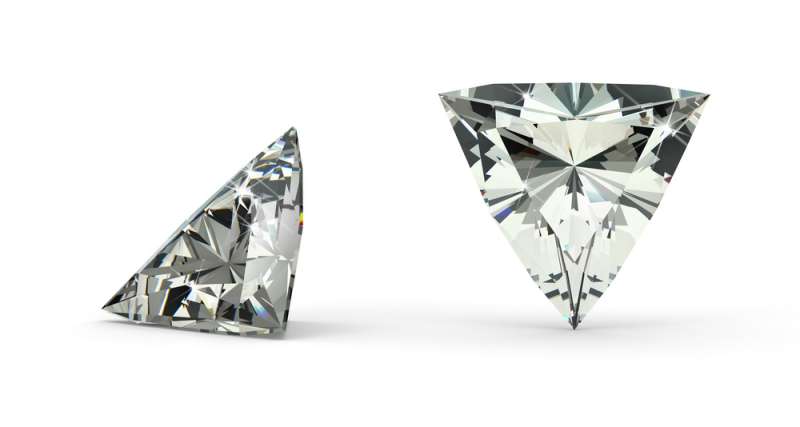
Trillion-Cut Diamond
Trillion-cut diamonds, also known as trilliant-cut diamonds, are diamonds that have been skillfully cut into a distinctive triangular shape. Typically, these diamonds feature three edges of equal length and a flat table on their surface.
Compared to other diamond shapes, the trillion cut is relatively young, originating in the 1960s. It is renowned for its daring and captivating appearance, making it an intriguing choice for those seeking a unique and bold diamond shape.
While the trillion cut is commonly used as side-stone diamonds in jewelry, it is also seen as the centerpiece in some engagement rings. The Henry Meyer Diamond Company holds the trademark for the trillion-cut diamond, but early versions of this cut are believed to have been fashioned in the 19th century in Amsterdam. Over time, variations of the trillion cut have emerged, featuring different facet counts and shapes.
Given the variations in the cut among different trillion diamond variants, it is crucial to carefully examine the details when comparing stones in this cut. This ensures that you select a trillion-cut diamond that meets your specific preferences and requirements.

Asscher Cut Diamond
The Asscher cut diamond boasts an octagonal shape with square-shaped facets. This particular cut is characterized by a high crown and deep pavilion, which contribute to its brilliance and distinctive aesthetic. The straight-edged facets of the Asscher shape give it a clean and unique appearance.
With 58 facets, the Asscher cut diamond has the same number as a round diamond. However, the arrangement of these facets creates a vintage look often described as a “hall of mirrors” effect.
The Asscher diamond is square in width and length, similar to a square shape, but with beveled corners that lend it an octagonal shape. This places the diamond between a round cut and a princess cut in terms of its overall appearance.
Originally created by the Asscher Brothers in 1902, the Asscher cut diamond experienced a resurgence in popularity in 2002, coinciding with its 100th anniversary and a slight modification to the cutting technique. Interestingly, the original Asscher cut design with its 58 facets was never patented. Many individuals are drawn to this diamond shape due to its unique vintage appeal.
The Asscher cut diamond was particularly favored during the Art Deco era of the 1920s. Even today, the Asscher-cut diamond retains an allure reminiscent of that time period.
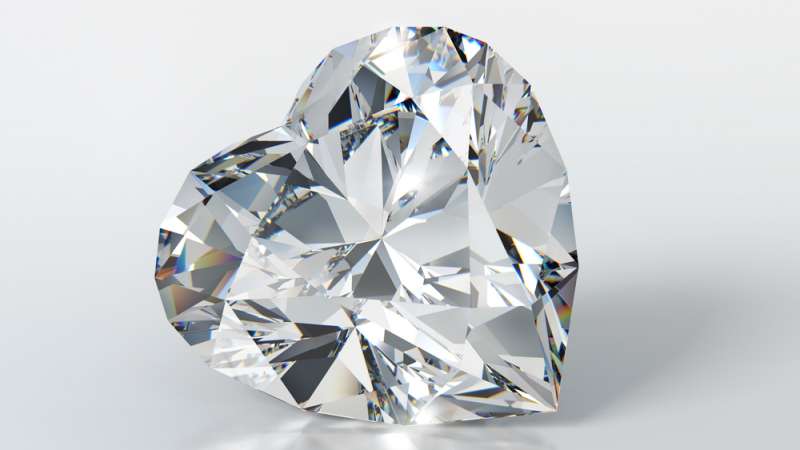
Heart-Shaped Diamond
The heart-shaped diamond is a captivating gem shape that speaks volumes without the need for words. Designed in the likeness of two interconnected teardrops or a pear-shaped diamond, this cut expresses a profound declaration of love.
Heart-shaped diamonds can be found adorning various jewelry pieces, including bracelets, pendants, and more. However, they are most commonly used as the centerpiece in diamond engagement rings, where their depth and brilliance truly shine.
While many are familiar with the heart-shaped blue diamond featured in the movie Titanic, there have been recent notable heart-shaped diamond sales. For instance, “La Legende,” the largest heart-shaped diamond, was recently sold at an auction in Geneva. Another renowned heart-shaped diamond is the Immortal Heart, a striking blue stone weighing 27.64 carats and valued at 16 million dollars.

Baguette-Cut Diamond
The baguette-cut diamond is a slender and elongated rectangular gemstone. While they are often long and slim, there are variations that can almost resemble a square shape.
Typically, baguette-cut diamonds have a length-to-width ratio of around 5:1. Some baguettes have straight edges, forming a perfect rectangle, while others have tapered edges that angle inward.
Compared to most diamond shapes that feature over 50 facets, baguette diamonds have 14 facets. They are generally smaller in size and commonly used as side stones in rings.
As part of the “step-cut diamond family,” which includes Asscher and emerald cuts, baguettes share the characteristic of having straight and well-defined facets.
Due to their step-cut nature, baguette-cut diamonds, along with other step-cut diamonds, have a distinctive appearance with less brilliance and sparkle compared to round-cut diamonds.
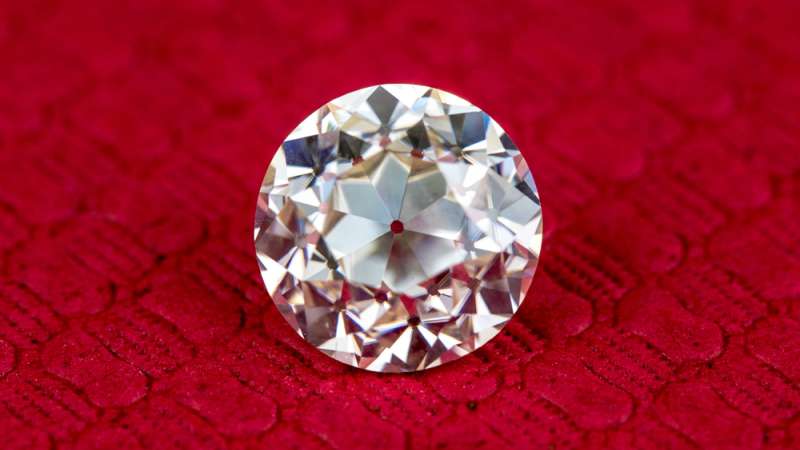
Old European-Cut Diamond
The Old European cut diamond, which was popular between 1890 and 1930, is essentially a precursor to the modern round-cut diamond. It bears a strong resemblance to its contemporary counterpart.
Old European cut diamonds have a round shape with 58 distinct facets and a small circular area in the center known as the open culet.
These diamonds gained popularity during the Victorian and Art Deco eras, and when searching for rings with this diamond cut, you’ll often find influences from the Art Deco and vintage styles, resulting in stunning vintage engagement ring aesthetics.
One advantage of Old European cuts is that they tend to appear whiter than their certified color grade. When evaluating gemstone color grades, they are typically assessed from the side. However, since Old European cut diamonds were crafted during a time when lighting conditions were lower (consider the use of candlelight), they were designed to emphasize color over brilliance.
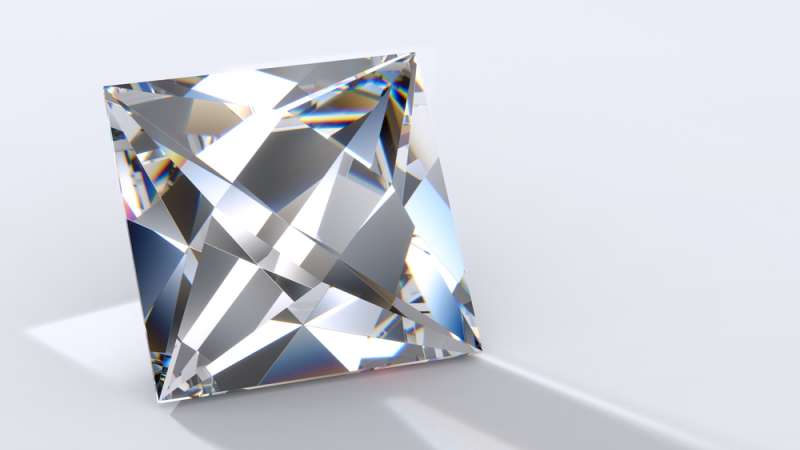
French-Cut Diamond
The French cut diamond stands out with its square-shaped crown when viewed from the top. It is characterized by a crown consisting of only nine facets, with square table facets positioned diagonally to the crown.
The primary crown facets are triangular and adjacent, pointing towards the corners of the diamond, creating an optical appearance of a four-pointed star. The crown is ideally positioned high enough to incorporate a small table facet.
Some French cut diamonds feature an octagonal table, achieved by further splitting the triangular corner facets. This modification enhances the number of reflections and contributes to a deeply sophisticated play of light.
In the past, the French cut was more commonly used by high-end jewelers.
Today’s French cut diamonds showcase a range of geometric shapes, made possible by modern technology. The design allows for freedom and creativity, resulting in truly captivating and unique gemstones.
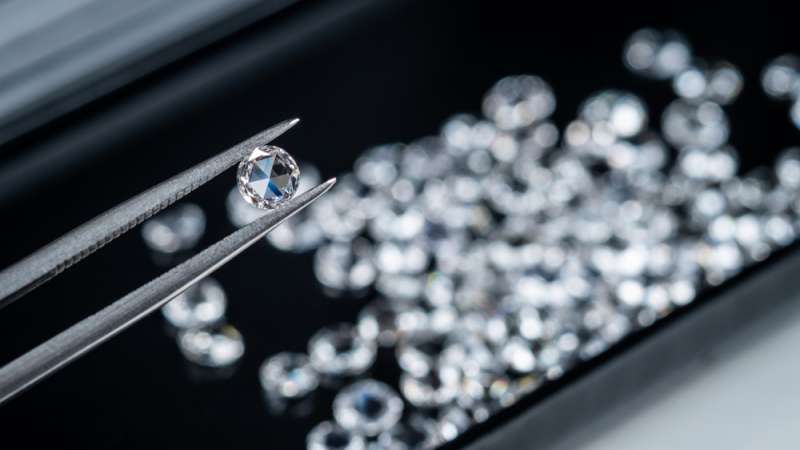
Rose-Cut Diamond
During the Victorian era, the rose cut diamond was a popular choice. These diamonds were hand-cut and designed to showcase their sparkle in the glow of candlelight. Their wide and large facets were specifically crafted to perform well in low-light settings.
However, as time passed and new jewelry trends emerged in the 20th century, the rose cut gradually lost its popularity. Brilliant-cut diamonds became the preferred choice among consumers.
In recent years, there has been a resurgence of interest in the rose cut. As more individuals seek unique and vintage alternatives to the standard modern diamond shapes, rose-cut diamonds have gained appreciation for their simple yet elegant and timeless appearance. They offer a distinctive and classic look that appeals to those looking for something different.
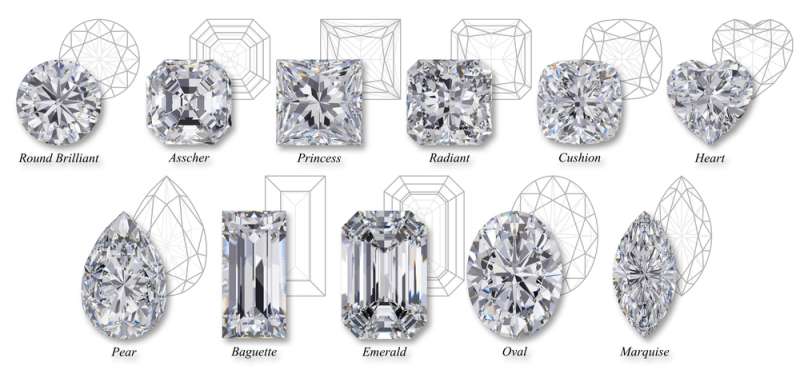
Final Thoughts
Diamonds are undoubtedly one of the most visually captivating natural treasures in the world. Their allure and uniqueness are beyond measure, although jewelers might argue otherwise.
It is crucial to raise awareness about diamonds, not just as precious gemstones for adorning rings, but as precious natural assets. Skilled craftsmen have the ability to bring diamonds to their aesthetic pinnacle, through the interplay of shape, depth, angles, and cuts, each contributing to their brilliance.
This article delves into the most renowned and commonly found diamond shapes, providing insights into what each shape represents. Armed with this knowledge, you can make informed choices when purchasing a diamond. Moreover, it may also offer insights into your own personal style preferences, as your favored diamond shape can speak volumes about you.
While every diamond shape possesses its own exquisite beauty and sophistication, there is always one that stands out to you, evoking the feeling of “This is the one!” That is the diamond shape you should wholeheartedly embrace.
We hope you find this article both intriguing and informative. Please share your thoughts and opinions with us, and let us know your favorite diamond shape or if there is a shape that we might have overlooked.
Feel free to share this guide with someone who shares your interest in this topic or anyone who may find it helpful at this moment!


